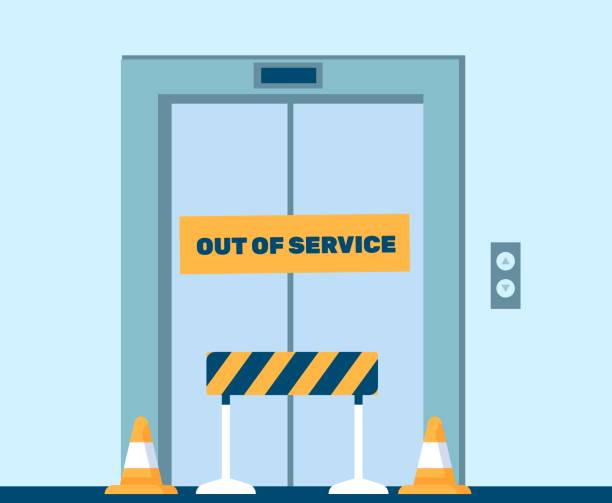How Lift Maintenance London Sticks Out Amongst Local Lift Repair Companies
How Lift Maintenance London Sticks Out Amongst Local Lift Repair Companies
Blog Article
Comprehensive Guide to Lift Equipments and Their Upkeep
Navigating the detailed globe of elevator systems and their maintenance is a job that demands precision and expertise. From the various types of lift systems in use to the careful adherence to safety and security policies, the maintenance of these vertical transportation tools is a multifaceted venture.
Types of Lift Equipments
Elevator systems can be found in various types, each made to suit particular structure requirements and user requirements. One of the most usual kinds include hydraulic elevators, traction lifts, machine-room-less lifts, and vacuum elevators. Hydraulic elevators are ideal for low-rise buildings and utilize a hydraulic piston to relocate the lift car. Grip lifts, on the various other hand, are extra matched for skyscrapers and utilize steel ropes and weights to relocate the auto. Machine-room-less lifts are a space-saving alternative as they do not require a separate machine room for the elevator machinery. Vacuum elevators, a more modern development, use atmospheric pressure differentials to move the automobile within a transparent tube.
Each kind of lift system has its own advantages and drawbacks, making it important for building owners and programmers to very carefully consider their certain requirements before selecting one of the most ideal choice. Elements such as building elevation, area availability, energy performance, and budget plan restrictions all play a significant duty in figuring out the finest elevator system for a certain building.
Usual Upkeep Issues
Normal upkeep of lift systems is crucial to ensure smooth procedure and lengthen their life expectancy. In spite of routine upkeep, elevator systems can still encounter common upkeep concerns that require to be immediately dealt with to avoid disruptions in service. Normal inspections and aggressive upkeep can assist identify and resolve these usual upkeep concerns prior to they rise and influence the total performance of the elevator system.
Safety Regulations and Conformity
Sticking to strict safety regulations and making certain conformity with market standards are paramount for keeping the operational integrity of lift systems. Elevators are subject to a comprehensive set of safety policies to secure passengers, upkeep workers, and the public. Governing bodies such as the Occupational Security and Health Management (OSHA) in the United States and the European Lift Organization (ELA) in Europe establish guidelines that cover numerous elements of elevator style, procedure, installation, and maintenance.
Conformity with these regulations is not only a legal demand however additionally an ethical commitment for building owners and elevator maintenance business. Normal examinations, upkeep checks, and adherence to safety protocols outlined in the policies are necessary to ensure the efficient and risk-free operation of elevator systems.
Finest Practices for Maintenance

An additional crucial finest method is to immediately attend to any unusual noises or noted issues to stop further damage. Executing a proactive approach to upkeep can conserve money and time in the lengthy run by staying clear of expensive fixings or substitutes. Structure owners must additionally take into consideration buying innovation upgrades to boost the performance and safety of their elevator systems. By following these ideal techniques, lift systems can operate smoothly and safely, giving trustworthy vertical transport for occupants.

Advanced Technologies for Effectiveness
Carrying out innovative modern technologies in lift systems can significantly enhance operational performance and guest experience. lift repair companies near me. One of the vital advancements in lift modern technology is the intro of location control systems. These systems enable travelers to input their preferred floor before getting in the lift, which after that routes them to one of the most effective automobile. By reducing unnecessary stops and maximizing travel courses, location control systems decrease wait click over here times and congestion in high-traffic structures.
Additionally, the combination of smart sensors and predictive upkeep capabilities has reinvented lift upkeep. These sensors can discover potential problems before they intensify, enabling proactive upkeep interventions and decreasing downtime. In addition, using energy-efficient elements and regenerative drives assists minimize power usage and More about the author operating expenses in elevator systems.
Additionally, the implementation of cloud-based surveillance and remote diagnostics permits real-time monitoring of elevator efficiency and prompt troubleshooting of any type of breakdowns. This positive strategy not only enhances system integrity yet also improves the total customer experience by making sure continuous and smooth lift procedures.
Verdict
Finally, comprehending the various kinds of lift systems, usual maintenance issues, security guidelines, ideal maintenance practices, and advanced innovations for performance is critical for making certain the smooth procedure of elevators. By adhering to safety policies and executing best methods for upkeep, building owners can prolong the lifespan of their elevator systems and guarantee the security of travelers. It is very important to stay updated on the most recent improvements in lift innovation to enhance effectiveness and dependability.
The most common types consist of hydraulic lifts, grip elevators, machine-room-less elevators, and vacuum lifts. Hydraulic lifts are suitable for low-rise structures and utilize a hydraulic piston to move the elevator vehicle. Machine-room-less elevators are a space-saving option as they do not require a different equipment space for the lift machinery. Routine evaluations and positive maintenance can help identify and deal with these common maintenance issues prior to they intensify and impact the overall efficiency of the lift system.

Report this page